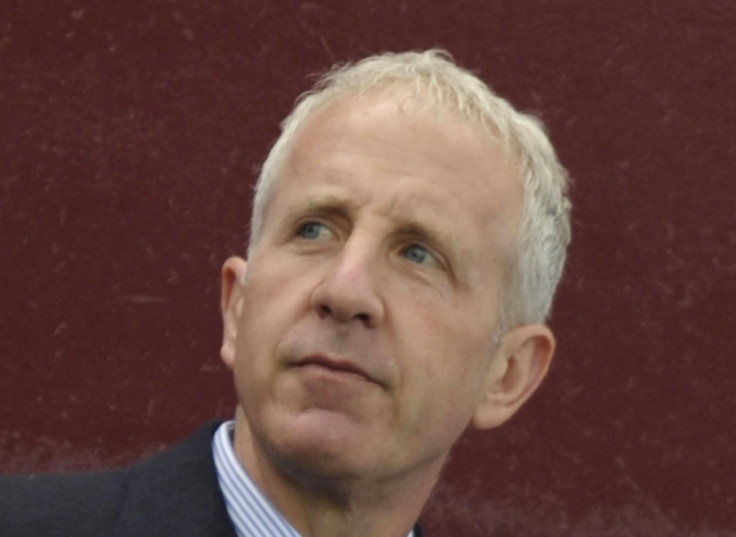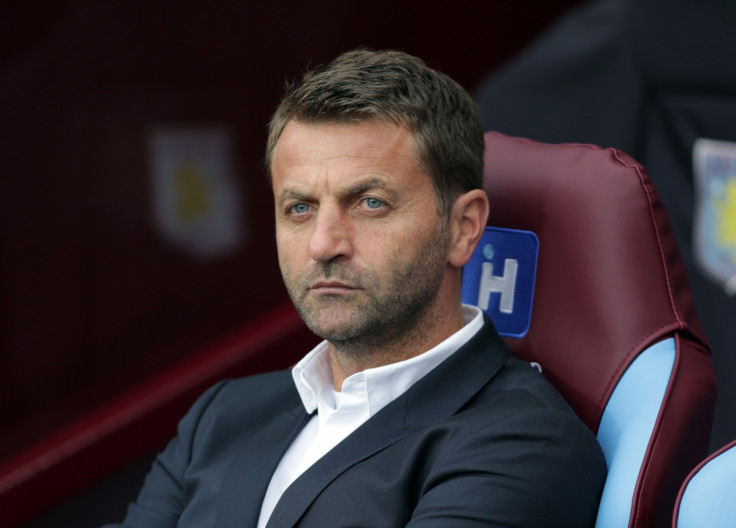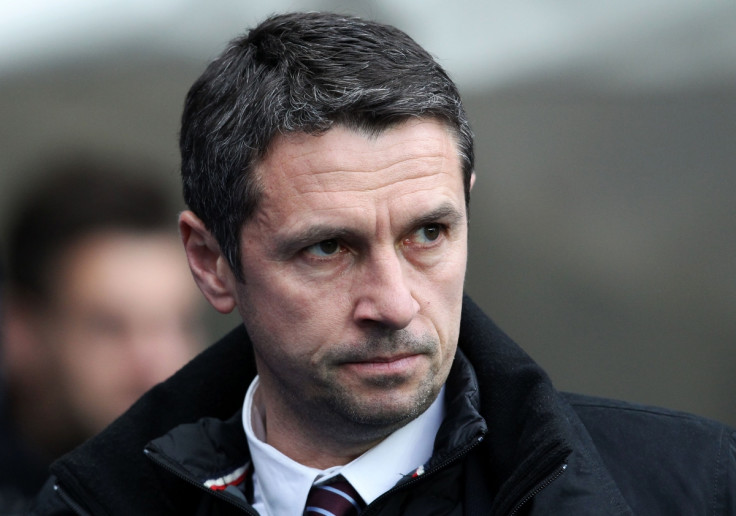Aston Villa relegation: The key moments that sealed the downfall of the former European champions

An unremarkable goal from Manchester United's 18-year-old striker Marcus Rashford was enough to confirm Aston Villa's relegation from the Premier League on Saturday (16 April) . The club's under-performing players trudged from the field at Old Trafford with downbeat expressions on their faces, knowing they had fallen woefully short of the standard required.
In truth, though, the downfall of the once-proud Midlands club is a story that has slowly evolved over a number of seasons, IBTimes UK looks back at the key moments that led to the decline of Villa.
The Randy Lerner takeover

For years, Villa fans had moaned about the money-conscious methods of Sir Doug Ellis, who had led the club through the Premier League era. The former chairman was frequently accused of putting a ceiling on Villa's ambitions with his thrifty approach in the transfer market and his notoriously ruthless attitude towards managers, which led to his nickname 'Deadly Doug'.
However, in 2006 the club appeared to be on the cusp of a new dawn, with American billionaire Randy Lerner buying Ellis' stake in the club. His arrival in the Midlands prompted fans at Villa Park to dream that they could follow Chelsea in being the next Premier League club to be transformed by the wealth of a foreign owner. Indeed, Lerner said he wanted to "compete at the highest level within the Premiership and in Europe".
The American was initially happy to spend heavily on the club's playing squad, bringing in a host of highly rated young players, such as Ashley Young and James Milner. And for a time under the stewardship of boss Martin O'Neill, they were competing for Champions League qualification.
But in spite of the lavish spending on transfer fees and wages, O'Neill only had three sixth-placed league finishes to show for his efforts. The spending could not be sustained, and by 2010 it became clear Lerner was not willing to throw good money after bad. Milner was sold to cash-rich Manchester City and O'Neill walked away from the club five days before the start of the new campaign. It was the start of the decline.
Gerard Houllier's health woes

Opinions of O'Neill's time in charge of the one-time European Cup winners are mixed. The Northern Irishman lifted the club towards the upper echelons of the Premier League table, playing an energetic, exciting brand of football in the process. But Lerner's eye-catching spending did not lead to trophies .
O'Neill's decision to quit the club in such abrupt circumstances left Villa without a manager and with a spiralling wage bill. The scenario was unsustainable and the new boss, Gerard Houllier, would have more modest resources to work with.
The Frenchman arrived at the club with an enviable reputation, having previously managed the French national team and led Liverpool during a trophy-laden period in the early 2000s. Once again – and against expectations – Lerner dipped into his pockets to fund the transfer of Darren Bent. Even though their goals had been lowered, Villa fans still had reasons to be optimistic about their future.
However, Houllier – who underwent a heart operation in 2001 – was admitted to hospital in April 2011 after falling suddenly ill. He was replaced by assistant manager Gary McAllister in the short term and stepped down as boss of Villa by mutual consent in June. Once again, the club was left looking for a new gaffer.
A tale of two Scots

Things spiralled out of control at Villa Park that summer when the club – against the will of their fans and all available logic – decided to appoint Alex McLeish, the former manager of bitter rivals Birmingham City. The move was doomed to fail from the outset, as large swathes of Villa fans refused to accept McLeish as their new leader.
The situation was compounded by Lerner's increasingly frugal approach in the transfer market and McLeish's uninspiring tactical plans. When the former Rangers boss left the club a year later, it was seen as a triumph by many of the Holte End faithful.
"I would have had to have won the treble to be accepted by certain Villa fans," McLeish subsequently said. "It doesn't matter who the manager is, if you don't have the players you won't succeed and we didn't."
Thereafter, the club turned to another Scot, Paul Lambert, who had earned his reputation as one of Britain's most exciting young managers at Norwich City. During his time at Villa, Lambert – in large part due to budgetary restraints – invested his faith in youth team graduates. Despite flirting with relegation during his first two seasons at the club, he was generally regarded as having done a good job.
In his third season, however, Lambert opted to sign more experienced players in the transfer market. The plan backfired, and Lambert and Villa parted company in February 2015, with the club in 18th position in the Premier League.
Tim Sherwood

Lambert was replaced at Villa Park by Tim Sherwood, who had done a credible job in temporary charge of Tottenham Hotspur, but still lacked substantial experience at the top level. The passionate Englishman offered a back-to-basics approach that helped steer the club clear of the relegation zone and even took them to an FA Cup final against Arsenal at Wembley. Although they were thumped by Arsene Wenger's side during the showpiece occasion, Sherwood had brought some optimism back to Villa Park.
But following the sales of Christian Benteke and Fabian Delph, things started to fall apart once again. Sherwood openly criticised sporting director Hendrik Almstadt and director of recruitment Paddy Riley for signing players of insufficient quality, citing Jordan Amavi and Jordan Veretout as examples. He was sacked in October 2015, with the club sat at the foot of the Premier League.
Remi Garde and relegation

The final nail in Villa's coffin came with the appointment of Remi Garde, who was known to English fans for his three-year spell at Arsenal during his playing days. The Frenchman arrived in the Midlands with an optimistic attitude but quickly came to realise that the culture of failure had seeped into the club's core, and that relegation was a virtual certainty.
Garde faced disciplinary problems with a number of his squad, suggesting some of them were not committed to the cause. He also admitted to troubles in convincing players to join the club during the January transfer window. After each defeat, Garde's frustrations with his squad grew more and more apparent, and his position at the club became untenable, having been so vocal in his criticism of the players. Garde left the club in March, five months after taking charge.
From that point onwards, Villa's future as a Championship club appeared to be certain and Rashford's goal at Old Trafford merely served to confirm the news fans have been dreading for years. Thankfully – and for the first time in the club's recent history – the only way appears to be up from here.
© Copyright IBTimes 2025. All rights reserved.





















